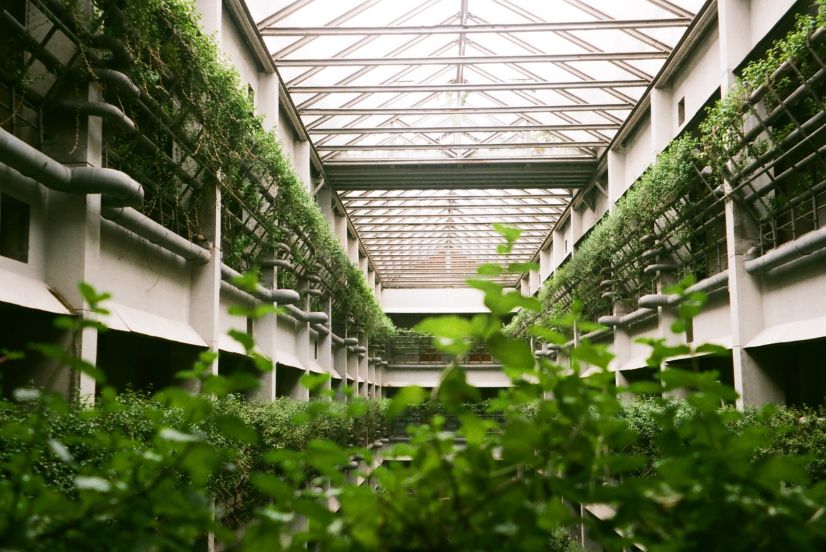Construction teams are increasingly emphasizing sustainability and efficiency, such as cutting greenhouse gas emissions and supporting sustainable resource use.
Buildings positioned to take advantage of sunlight and wind patterns can significantly lower HVAC energy use.
HVAC manufacturers are moving swiftly away from refrigerants that deplete the ozone layer and toward greener options like R-454B and R-32, which have low global warming potential and almost no hydrofluorocarbons.
For insights on eco-friendly HVAC alternatives, you can get additional information at River Valley Air Conditioning Inc. – click here to learn more.
If you would like to speak to a technician directly, call River Valley at +1 928-768-2122 or visit them in person at 5107 AZ-95, Fort Mohave, AZ 86426.
Read below for some new trends in the construction space!
1. Hybrid HVAC systems
Hybrid heating and cooling systems employ two forms of energy (natural gas for gas furnaces and electricity for air conditioners). However, conventional HVAC systems only require one energy source—natural gas or electricity.
Hybrid systems utilize multiple energy sources depending on outdoor temperature fluctuations or other factors to determine when each fuel type should be utilized.
Hybrid systems enable greater energy efficiency without compromising comfort, and cutting back on ventilation. Modern technology also eliminates the need for excessive ventilation, helping reduce indoor pollutants while improving air quality.
Utilizing proper acoustic design, such as insulated windows or sound-absorbing ceilings, further enhances performance by decreasing unwanted noise transmission.
Hybrid HVAC systems also boast reliable performance. A hybrid heat pump runs continuously, unlike its counterpart furnace, which operates intermittently. This ensures homes remain at consistent temperatures all day without experiencing unexpected temperature variations throughout the day.
Additionally, hybrid systems don’t use fossil fuels, helping reduce emissions and minimize dependence on foreign energy sources.
2. Electrification
Electrification is one of the key trends for sustainable building construction, serving to replace fossil fuels with electricity for heating, cooling, and other energy-intensive systems in both homes and businesses.
More homeowners and building managers are choosing electric heat pumps, water heaters, refrigerators, and appliances fueled by renewable energy sources to diminish carbon emissions and air pollutants.
By doing so, these systems help cut back emissions that pollute our atmosphere – with carbon emissions dropping by over 25% due to these systems running on renewable power sources.
As part of a growing trend, HVAC manufacturers are adopting smart technology into their systems to increase efficiency and performance, such as connected systems that allow remote monitoring and control and predictive maintenance solutions that detect issues before they cause downtime – thus decreasing operational costs and environmental impact.
One advantage of electrification is reduced carbon emissions. Manufacturing steel, concrete and other building materials produce large amounts of CO2. However, switching over to electric power reduces these emissions, reducing the environmental impact.
Before mandating widespread electrification policies, it is necessary to assess their effects. The first step should be assessing whether changes would pass a societal cost-benefit test; this involves weighing both the private and social energy generation costs against reduced fossil fuel consumption benefits.
3. Green roofs
Green roofs are one of the most widely recognized components of sustainable building design, as their popularity grows daily. A green roof comprises several layers of roofing material that serve specific functions: water retention, soil and root repellant, insulation, waterproofing and vegetative plantings.
Green roof plants absorb carbon from the atmosphere and store it in their tissues and substrates through respiration, photosynthesis and decomposition processes – helping reduce greenhouse gas emissions from buildings and improving thermal performance.
Cities where large portions of land are covered by impervious surfaces experience instantaneous and intense runoff caused by rainfall, which in turn overwhelms urban stormwater infrastructure, causing flash flooding.
Green roofs significantly reduce the volume and intensity of runoff while slowing its pace to allow water to enter stormwater systems more gradually and responsibly.
People tend to appreciate natural elements, and research has indicated that greenery on buildings can increase employee productivity and well-being while adding value to a property. Many buyers prefer houses with green roofs or at least value them as a feature.
Furthermore, green roofs act as a habitat for wildlife, providing important ecological bridges between more substantial or remnant ecosystems.
4. Smart buildings
Smart buildings are the latest trend in sustainable building design.
These intelligent facilities utilize various sensors and automation systems to track all equipment in the building – like HVAC, lighting and security systems – in real-time and optimize them as efficiently as possible to reduce energy costs, greenhouse gas emissions, and improve quality of life and productivity for occupants.
An average smart building utilizes technologies like IoT, machine learning and automation to monitor room-by-room and floor performance.
If the building is empty on an especially hot afternoon, for instance, its system will shut off its air conditioning to save energy and cut costs. Additionally, it can proactively predict usage ahead of peak times to adjust systems before peak demands occur.
These systems can also be connected to a cloud-based analytics platform that gives managers insight into their entire building’s performance and energy use, helping them identify areas utilizing too much energy or needing updates, which may give the insight required to reach net zero goals more quickly.
Furthermore, such systems help track air quality so everyone remains healthy and comfortable, which may also simplify meeting government health and safety regulations.
